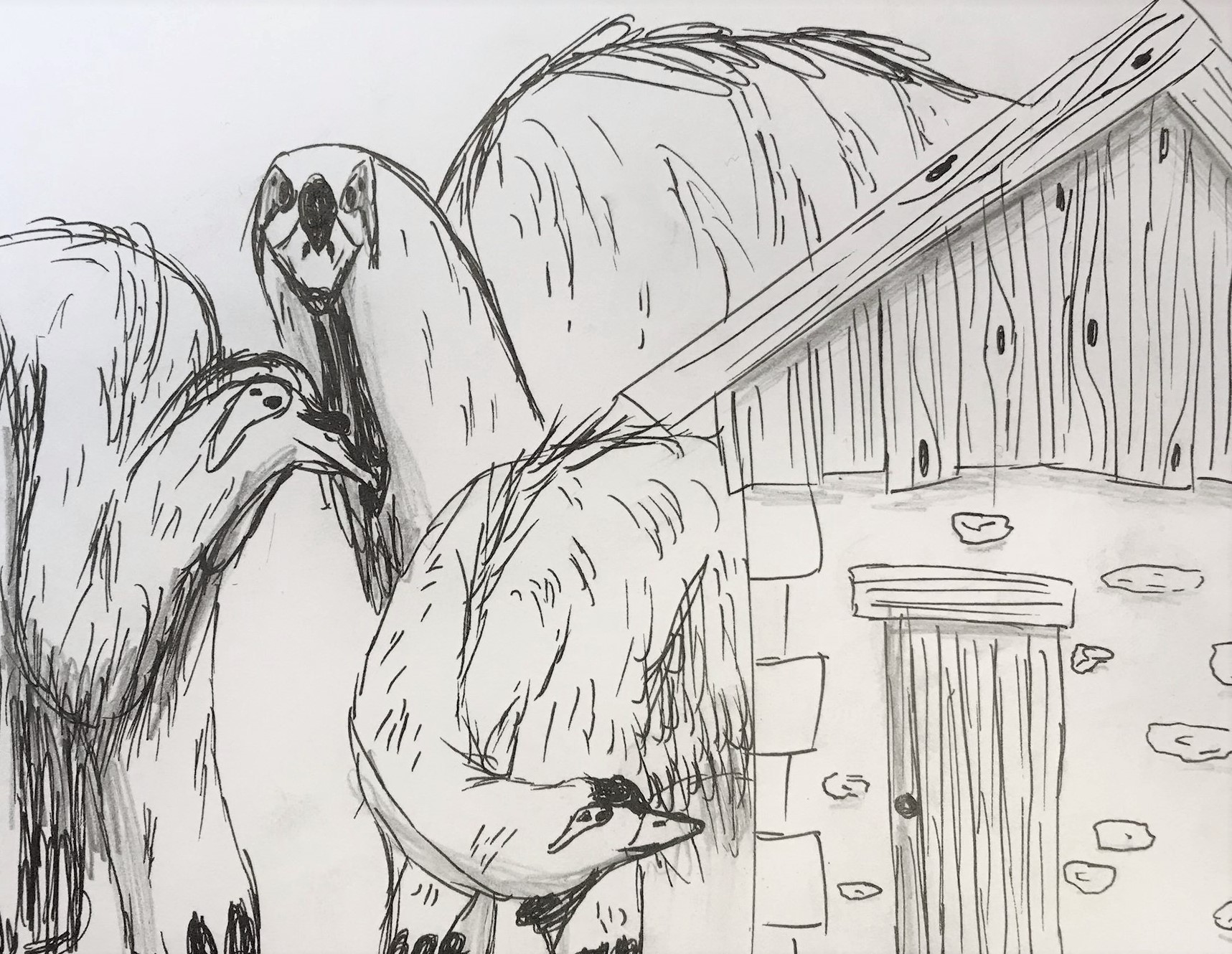Aetids
The biggest animals known in Boomal are from the Aetidias family. The biggest species, Aetidias fragilis, can measure 18 to 25 crosses (~4-5m) at the shoulder, and weigh up to 30 barrels (~15 tons)
Humans domesticated the heerus (Aetidias domesticus) species long ago, and pastors lead their herds in the vast emptiness of the Blue Sea.
Various species of aetids can be found in many parts of the world, from A. borealis in the everfrost lands of the North, to A deserticus, in the hot deserts of the Golden Sea.
Basic Information
Anatomy
Aetids have four long and large limbs. They have a thick plumage on the whole body. Their long neck and flat beak are helpful tools for grazing the dense and thick grass.
Their face is often hairless around the eyes and/or beak, and brightly coloured on males
Genetics and Reproduction
Aetids lay large eggs, one every two years for most species and one every few weeks for heeruses. The largest eggs reach five crosses high (1m), and weigh almost a barrel.
Ecology and Habitats
Most aetids live in herds of various sizes. They are placid herbivores, feeding on grasses and leaves on the soil.
Aetidias alto is quite different, as his neck is adapted to reach the leaves of tall trees.
Various species of aetids can be found in many parts of the world, from A. borealis in the everfrost lands of the North, to A deserticus, in the hot deserts of the Golden Sea.
Notably, some aetids are adapted to life in the mountains, but little is known of them, except that they are smaller and have a heavier plumage than regular heerus.
Dietary Needs and Habits
Aetids are mostly grazing species. A few of them adapted to feeding on tree leaves, by having their neck upward.
Additional Information
Social Structure
Most aetids live in familial groups. Some, such as A. domesticus, live in much larger herds of up to a thousand adults.
Domestication
The domestication of A. domesticus and, more recently, A. deserticus, selects the most docile, and the most resilient individuals. Thus, domesticated lineages are way better pets than descendants of wild herds. In the Blue sea, some breeders have selected various uncommon color schemes.
Uses, Products & Exploitation
heavers are mainly used for food production (meat or eggs), transportation, field work and raw force in mills, ploughing, as well as feather and fuzz production.
Average Intelligence
Aetids are highly sociable. They are not very smart, and rely a lot on the group's dynamics.
Domestic aetids can learn tricks, habits and postures.
Perception and Sensory Capabilities
Aetids have, just like all bird species, two pairs of eyes. The front pair is specialised in seeing daylight, but the rear pair is sensing infrareds, to allow birds to see in the dark of night.
Lifespan
15 to 60 years
Average Height
from 7 to 25 crosses at the shoulder, depending on the species
Average Weight
from 1 to 30 barrels
Average Physique
Aetids are strong and very resilient creatures. They are able to travel long distances with little food and water. However they cannot run on long distances. Their beaks are quite strong and their bite is painful enough to deter huntsbeasts.




Comments